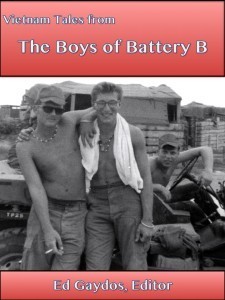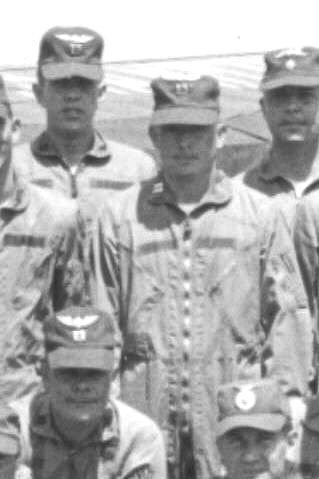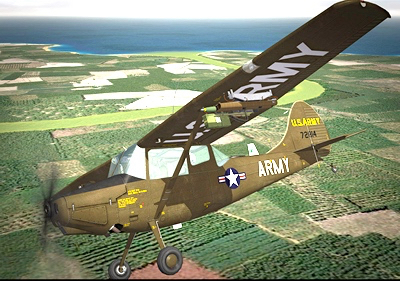Willie J. Ridgeway – Battery Commander – Part Two

Cover 4
WILLIE J. RIDGEWAY
Battery Commander
Part Two
Flight School
Immediately after Vietnam Willie took a giant step closer to his beloved helicopters when he entered the first phase of flight school at Ft. Stewart in Georgia. The second phase of flight school took him to Ft. Rucker in Alabama, where he continued his training and earned his wings.
His flight school classmates remember a cool headed and seasoned Vietnam veteran.
Dan Oates flew O-1 Bird Dogs in Vietnam, a single engine reconnaissance plane with pilot and passenger seats front and back. Today he works at a Christian ministry focused on combat veterans with post traumatic stress.
Willy was older than most of us and therefore, assumed a little bit of an older brother role. I remember Inga and their daughters and how much he seemed to enjoy the parties that we had in flight school. It was a carefree time and we all knew what was in front of us. Since Willie and a couple of the other guys were combat veterans, their insight was helpful in preparing us for combat.
We did ground school together and we attended social gatherings. He was always under control. As I sit here I can see him with that confident look and his gray flight suit and red hat (We were the Red Hats). Each class had its own color hat to represent the class.

Captain Ridgeway center with Red Hat class
Jerry DiGrezio flew O-1 Bird Dogs in Vietnam and over the course of his career qualified in six aircraft. After seven years on active duty and 23 in the active reserves he retired a full colonel.
We were all pretty close in flight school. I remember Willie as a very good guy, a little older than the rest of us. He was 29 years old, while most of the guys going through flight school were 23/24. He was an old man.
He was a very cool character. When we were getting ready to graduate we were flying the Birddogs without instructors. I was flying the aircraft and he was in the back seat. I was landing at Cairns Field at Ft. Rucker. The Bird Dog had very springy landing gear, if you landed too hard it would spring you back up into the air. And when I came in I made a horrible, horrible landing and it bounced back up into the air. Willie never said a word. I would have freaked out if someone had done that to me.
Ed Cattron graduated from West Point and like Willie had a tour in Vietnam before flight school. On that tour he earned a Silver Star for his actions defending a tiny firebase of less than 100 troops, LZ Peanuts up near Khe Sahn, against a 14 hour onslaught of over 500 North Vietnamese regulars.
Willie met his wife Inga in Germany, and by the time we were in flight school they had the two girls. Peggy and Debbie. Willie and I shared a love of flying and both had a tour in Vietnam before flight school. We trained in a single engine aircraft called the T-41.
Willie was so quiet, and very intense. He told me a lot of stories about the supply depot in Vietnam (having been a supply sergeant in Germany) and about “combat losses.” There was a policy about flight sunglasses. You could only get them replaced if the lens was broken. Someone came in looking for a new pair due to a chip on the edge. The supply personnel told him he could not get a new pair unless the lens was broken – chipped did not qualify. So the guy broke the lens on the corner of the counter and said, “OK, now it’s broken.” Stories like that.
Back To Vietnam
Willie got his wings at Ft. Rucker in September of 1969. The Army’s helicopter school was also at Ft. Rucker. Instead of taking an assignment Willie was able to remain there and finally, finally transition to helicopters. Three months later on December 31 he reported for duty in Vietnam to the 219th Aviation Reconnaissance Company known as The Headhunters. There he was assigned to fly not helicopters but the O-1 Bird Dog reconnaissance airplane. Any veteran will tell you the Army put you where they needed you, not where you wanted to go.

O-1 Bird Dog on duty
The unit history of the 219th tells the rest of Willie’s story.
In March (1970) Captain Slimowitz was called to company headquarters in Pleiku to assume the duties of operations officer. Captain Slimowitz’s replacement as platoon leader was Captain Willie J. Ridgeway, a second tour aviator who was newly arrived in Vietnam.
The serene winter experienced by the aviators of the second platoon in Kontum erupted violently in the spring when on 1 April, the infamous battle of Dak Seang erupted. The first aircraft on the scene that morning was a birddog piloted by HEADHUNTER Gary P. Lowery, and during the ensuing days while the battle for the besieged strategic border camp raged, there were few moments of the daylight hours when a HEADHUNTER of the 2nd platoon was not nearby overhead directing airstrikes, and giving valuable visual reconnaissance information to the ground troops in the area. Before this fierce enemy attack was repulsed, there were many casualties taken by the allied defenders of the camp, and unfortunately the HEADHUNTERS were not spared. On 3 April, Captain Ridgeway was killed in an accident as he was returning to Dak Seang from Kontum to continue aviation support.
There is only speculation around the cause of the crash. The only known fact is that the crash occurred on takeoff after multiple runs to support the troops still under siege.
Ed Cattron
My wife discovered he had died through a Red Hat newsletter. She kept in touch with Inga for a while. I was back in Vietnam for my second tour when the accident happened. I heard about it from my wife when she got the letter from Inga.
I found out details of it years later when my Red Hat class got together for a reunion. Some units had been in contact and there was pretty intense fighting on the day he died. He flew several missions during that day. Towards the end of the day he had come back, refueled and decided to go out once again to do artillery spotting. On take off the aircraft just went straight up in the air and straight down. There was speculation that the seat had slipped back – there were occasional reports of seats that would slip – and if you were holding onto the controls you’d pull back on the elevator and the plane would go straight up in the air. Either that or he was exhausted and passed out. There was no direct enemy action. I saw pilots over there flying well in excess of anything the FAA would allow today.
There is no explanation for why he transitioned to helicopters and then in Vietnam ended up in a fixed wing Bird Dog. Either he did not make it through helicopter training (a very different type of flying with different physical demands), or the Army simply had an opening in the Bird Dog and put him there.
Willard Long
The way I found out he had gotten killed, about four years ago, my daughter was working in Washington, DC. She said, “Dad go with me,” and we rode the train up there. While she was working I wandered over to the Vietnam Memorial. There was a gentleman there and I asked him could he possibly see if there was a Willie Ridgeway there. He just flipped open the directory and said, “We got a Captain Willie Ridgeway.” I went home and found the unit history report of the accident and an obituary picture and I knew then that it was him.
Peggy Ridgeway Musgrove – Willie and Inga’s oldest daughter
My mother always told he loved life and mom said she was glad that he lived it to the fullest. He was always doing stuff like surfing, scuba diving when we lived in Hawaii (we were there for 3 years). And she said he loved to fly and play baseball.
I was born in Germany. He chose my name and he was there for my birth and my first year, then he was sent to flight school where he was when my sister was born, he could not come home for her birth because he was taking a test (which Mom said he failed). He did not get to see my sister for the first time until she was three months old.
I was five when he died but I still remember the day they came to the door to tell us he had died.
I remember my Mom telling me the only way she could identity my father’s body was because he had smashed his finger the last time he was on leave. On that leave before he left he had my mother promise that if anything had happened to him that my sister and I would get an American education.
The last known photo of Willie was taken just weeks before he died. It captures the man everyone describes as resolute and unflappable.

March 1970 at headquarters compound in Kontum
Courtesy Scott Boyd
This is the look Jim Gacek must have seen two years earlier the night LZ Sherry prepared for a North Vietnamese Army ground attack.
It was during the monsoon season and pouring rain every evening. Intel came down that up to a battalion of NVA were headed our way and an attack may be imminent, as we were in the line of defense for LZ Betty and Phan Thiet. Captain Ridgeway came to my FDC bunker and along with the other officers and sergeants laid out the defensive plan for the night. It was tense.
I could see it written all over his face … this was serious shit. After everyone got their orders, he turned to me, looked me dead in the eye and said, “Gacek, you’ve got the telephone lines to the perimeter. When they (the NVA) hit the wire I want you to fire this white star cluster …. and if and when they break it, you fire the red one.” (Red meant beehive round on the way, take cover and shoot whatever moves.) My shit went weak.
We never did get hit, but I’ll never forget that look on his face. He was all business that night .
Willie J. Ridgeway fell a whisper short of his dream of piloting helicopters, yet in the end gave all he had to give. B Battery 5/27th Field Artillery is proud to place him among its fallen heroes.



